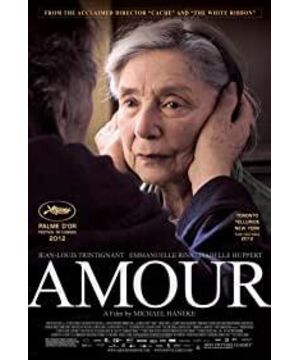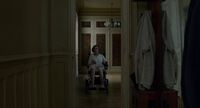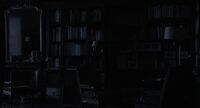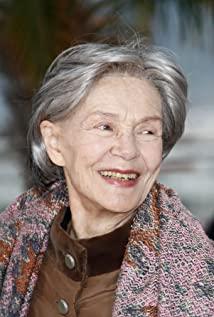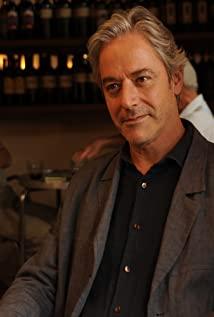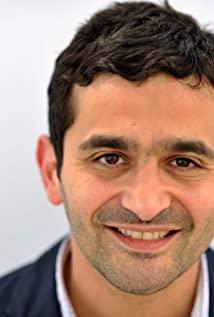There is an old saying: "I, ten has five, and I am determined to learn, I stand at 30, do not confuse at forty, know the destiny at fifty, listen to the ear at sixty, and follow the heart at seventy, do not exceed the rules." Haneke is already years old. In the seventies, when he stepped into the twilight scene of his life, he really made a movie that was very different from his previous work. What information does this sudden change of style contain? What is the secret of this "Love"?
1. The previous style
Haneke’s movies, from "Fun Game" (US version), to "Piano Teacher", to "White Ribbon", and then to "Love", can we glimpse Haneke's style trajectory? Is there any inherent consistency between the themes and forms of Hanek's work? certainly. Each of Haneke's films addresses the same theme: violence. There are many variations on the theme of violence, and Haneke explores different forms and levels of violence in every film. In a fun game, violence is incomprehensible. Haneke blocked all the background explanations and only saw the bloody process of violence-the wife who was beaten up (Naomi Watts), the husband with broken leg (Tim Rose) ), on this basis, the audience did not get any form of information about the source of violence in the film. In "Piano Teacher", Haneke added some background information that the birth of violence is an outbreak of sexual repression. Haneke constructed a very closed narrative framework, in which the family (mother) is the chief culprit of sexual depression. Therefore, when the female teacher played by Yu Pell meets a talented and handsome young man, her sexual desire and her distorted love impulse begin to be released step by step. In "White Ribbon", the birth process of violence is hidden deeper, and it is difficult to see the source of the crime (that is, the truth of the incident). The incident has become a mystery, but it seems that there are clues. Haneke borrowed the scriptures from the Suspense genre film, and arranged a suspense at the end of each scene, so as to gradually progress; but what is remarkable is that unlike any suspense genre, in "White Ribbon" Every suspense in the scene was not resolved in the subsequent scene units-the suspense was left empty, and it became more and more weird under the delay of a scene. As a result, Haneke gives more opportunities to the audience, and meditation has a very powerful expression in this work. When every audience participates in the event and explores the ins and outs of the event, the humanities of Haneke’s work The value is realized. "What I want to explore is the root cause of any form of violence and terrorism," Haneke said. ——It is a discussion, not a conclusion.
Each of Hanek's works has a chilling factor, and his works are permeated with ferocity and indifference. Without thinking about it, it’s hard to appreciate where this brutality and indifference comes from; I don’t know why Erica stabbed her ribs with a sharp knife at the end of "The Piano Teacher". I don’t know her attitude towards Walter. Pure physical craving, or deformed love. In addition, in each of his later works, the mirror language is motionless like a mountain, the static long shot, the frame is firmly locked in the narrow and dark space, making people breathless.
We can sum up Hanek’s style from this:
1. Violence constitutes the narrative theme.
2. Static long lens, enclosed space.
3. A violent montage organization that forms an intertextual relationship with the subject: no music, hard cut.
4. Flat light, cool tone, low contrast, the image has a clear air texture.
5. Concise. The elements of the play are concise, the images are concise, and the explanatory scenes are pitiful, especially without moral evaluation.
2. "Love": No style? Or is it a masterpiece?
In this year's "Love", Haneke invited two famous French actors to shoot a movie focusing on the last journey of his wife's life. The reason why this film seems to have changed drastically is because compared with the previous works, violence seems to give way to ordinary life. The large number of life details in the film creates a much warmer atmosphere than the previous works. But is this a completely reborn work? Has the original Hanek disappeared without a trace?
Obviously not. There is indeed a big difference between "Love" and the previous works. The drama of "Love" is simple and plain, and the structure is very daily, but simple life flows naturally, which has never been seen in previous works (all previous works have a unique and alternative story frame, this frame is abnormal, Even deformed). But this alone is not enough to show that "Love" is a transformational work. It can be said that "Love" is a masterpiece of Haneke.
First, although violence gave way to real life, "violence" has not disappeared. It has become a more metaphysical, more abstract, and more restrictive existence: death. We cannot deny that it is not a kind of violence to witness Anna debilitating day by day, nor can it be admitted that it is not a kind of violence that George killed Anna with a pillow. Therefore, it can be said that every Haneke film is deepened on the basis of the same theme. From the naked violence in "Game of Violence" to the socio-psychological factors added in "Piano Teacher", to the more sociological structure and thinking in "White Ribbon"-"violence" in every work All walked into a deeper realm, from obvious to hidden. In the end, it entered the ultimate, becoming the death and daily life in "Love". It is difficult for ordinary people to associate the apparent violence (visual and psychological) with the abstract “violence” that has been stripped of the artificial sense in the philosophical sense, but Haneke did it. This reflects his continuous attempts to explore more important propositions more deeply, and it also reflects that he finally reached the stage of transformation in this work and completed the highest form of expression (this trajectory is very similar to Yang Dechang’s creative trajectory: from " "Terrorist" to "One One").
Second, does the warmth in "Love" become the demarcation point of his work? I think it is not. When the audience saw the elderly George assisting Anna who had a stroke, the two embraced each other and moved tremblingly together, it was hard not to be moved. But it is worth noting that Hanek did not make this the focus of the narrative. If this is the focus of the narrative, then every scene will end with tenderness, so as to conform to the cumulative effect of emotion. But we have seen that although there are many scenes of warmth, none of the scenes in "Love" stop at warmth. There are many other factors behind the warmth. For example, at the beginning of Anna’s memory loss, George was frightened and overwhelmed. In this scene, in addition to showing warmth, it became more of a foreshadowing of the later content of the film, and became a sign and sign—"This is what happened to Anna’s stroke. starting point". In addition, as the film progresses, there are obviously fewer and fewer warmth scenes, from children's visits, quarrels; student visits, bitterness; to the scene where Anna tries to hunger strike, George feeds water, she does not drink, and George suddenly dumped it. A slap in the past, that slap is really worrying, and it is more heart-shaking than the violent scenes in his previous works, because, where is this pure violence? This is a slap that contains deep love, and the person who hits is an old woman who is about to die. At this point, the word "warmness" can no longer represent the inner temperament of this work. Compared with warmth, bitterness and helplessness have become the supreme protagonist. In the end, George killed Anna. The film has already contained an indescribable force, which contains both positive and negative feelings, and finally pushed us to a low point. In this trough, all morals do not work, and all thinking falls into silence under the irreversible power of death. Therefore, the work "Love" is a sign that Haneke leads the audience from the previous rational and calm "thinking" into a more solemn "feeling".
Third, although "Love" is a breakthrough work, it is still an out-and-out Hanekian work. The five major styles proposed before are all reflected in "Love". For example, the long shot of the opening concert. For example, most of the light effects in the film are in a cloudy atmosphere, and only one or two scenes of two people eating in the sun shines through the window. There is no soundtrack in the whole film, and direct cuts have appeared many times. This time the lines are even more concise, considering that most of the time the camera is aimed at the two elderly people, this concise line is particularly powerful. Anna's profession, the relationship between the children and the two elderly people, George's personality and intellectual personality, and Anna's strong personality, all were not explained in lines, but were completed by scene scheduling and performances to complete the ground. In addition to the indelible contributions of the two actors, Haneke's play skills also ensured the artistic level of "Love".
3. The so-
called Harmony refers to the consistency of form and content. Haneke, who was in the years as he pleased, is moving towards harmony in this work.
In his previous works, Haneke tried to construct a strange story frame. As a result, the cold, sluggish temperament in his works can be reasonably reflected in the environment. This time, Haneke changed from the past and entered the most ordinary daily life. Daily narrative is the simplest and most basic narrative, so it is the most difficult. Haneke did not repeat the old way, and walked into the most difficult and demanding story frame. In addition to his extraordinary courage, he also expressed his ultimate harmony. As a result, Haneke’s five major styles can even be fully reflected in daily life. Then, he has truly completed the unification of form and content, proving to the world that Haneke’s style is an iron-hard style, and his persistence finally made him Go to the highest point of his own field.
View more about Amour reviews


